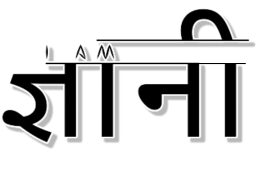Economic reforms since 1991 in India represent a significant shift in policy that aimed at liberalizing the Indian economy, reducing state control, and integrating it with the global market. These reforms were initiated in response to a severe economic crisis and are broadly categorized into structural reforms and stabilization measures.
1. Background of 1991 Reforms
- Economic Crisis: India faced a balance of payments crisis in 1991 due to high fiscal deficits, dwindling foreign exchange reserves (enough to cover only 2-3 weeks of imports), and rising inflation.
- IMF Intervention: To secure loans from the International Monetary Fund (IMF), India had to undertake structural adjustments, leading to the initiation of economic reforms.
2. Key Areas of Economic Reforms
A. Liberalization
Liberalization involved reducing state control over the economy and encouraging private sector participation.
- Industrial Policy Reforms:
- Abolition of Industrial Licensing: The government abolished the License Raj, removing licensing requirements for most industries.
- Reduction in Monopoly Controls: The Monopolies and Restrictive Trade Practices (MRTP) Act was amended, reducing restrictions on large companies.
- Encouraging FDI: Foreign Direct Investment (FDI) was allowed in various sectors, including manufacturing, telecommunications, and infrastructure.
- Financial Sector Reforms:
- Banking Reforms: Measures like the establishment of prudential norms, reducing Non-Performing Assets (NPAs), and greater autonomy to public sector banks.
- Stock Market Reforms: The Securities and Exchange Board of India (SEBI) was empowered to regulate and develop capital markets.
- Interest Rate Deregulation: Interest rates were deregulated to allow market forces to determine rates.
- Trade Policy Reforms:
- Reduction in Import Tariffs: Import duties were lowered significantly to promote competition and efficiency.
- Export Promotion: Export-oriented policies and Special Economic Zones (SEZs) were promoted.
- Removal of Quantitative Restrictions: Restrictions on imports were reduced or removed entirely.
- Tax Reforms:
- Introduction of VAT and GST: Over the years, reforms led to a shift towards value-added taxation, culminating in the introduction of the Goods and Services Tax (GST) in 2017.
- Reduction in Tax Rates: Both direct and indirect tax rates were rationalized to encourage compliance.
B. Privatization
Privatization aimed at reducing the government’s role in commercial activities by transferring ownership or management of public sector enterprises (PSEs) to private entities.
- Disinvestment: The government started disinvesting its equity in public sector undertakings (PSUs).
- Strategic Sale: Certain PSUs were fully or partially sold to private players.
- Greater Autonomy: “Navratna” and “Maharatna” status were given to high-performing PSUs for greater operational freedom.
C. Globalization
Globalization was intended to integrate the Indian economy with the global market.
- Encouraging FDI and FPI: Policies were relaxed to allow more foreign direct and portfolio investments.
- Currency Convertibility: The Indian rupee was made partially convertible on the current account in 1994, with limited convertibility on the capital account.
- Membership in WTO: India became a founding member of the World Trade Organization (WTO) in 1995, ensuring access to global markets.
3. Stabilization Measures
- Control Inflation: Monetary policies were adopted to manage inflation.
- Fiscal Discipline: The Fiscal Responsibility and Budget Management (FRBM) Act of 2003 was introduced to control fiscal deficits.
- Debt Management: Measures were taken to reduce reliance on external debt and promote internal borrowing.
4. Impact of the 1991 Economic Reforms
Positive Impacts:
- High GDP Growth: India’s GDP growth accelerated, averaging around 6-7% annually post-reforms.
- Increase in Foreign Exchange Reserves: From near bankruptcy in 1991, India’s forex reserves crossed $600 billion by 2021.
- Boom in Private Sector: Liberalization fostered the growth of the private sector and entrepreneurship.
- Rise of IT and Services Sector: India’s IT and services sectors grew significantly, contributing to exports and employment.
- Increased Global Integration: India became a major player in global trade and investment.
Challenges:
- Rising Inequality: Economic growth was not equitably distributed, leading to a widening gap between rich and poor.
- Agriculture Neglect: Reforms were heavily focused on industry and services, sidelining agriculture.
- Unemployment: The organized sector’s growth did not keep pace with the demand for jobs.
- Vulnerability to Global Shocks: Greater integration made India vulnerable to global financial crises.
5. Subsequent Reforms Post-1991
The reforms continued with further steps:
- Infrastructure Development: Public-private partnerships (PPPs) were promoted.
- Digital Reforms: Initiatives like Digital India and the JAM Trinity (Jan Dhan-Aadhaar-Mobile).
- Make in India: Launched to boost manufacturing.
- Labour and Land Reforms: Attempts to simplify laws and improve ease of doing business.
6. Conclusion
The 1991 economic reforms marked a paradigm shift in India’s economic policy. While they propelled India towards becoming a global economic power, addressing challenges like inequality, agricultural stagnation, and job creation remains critical for ensuring inclusive growth.

